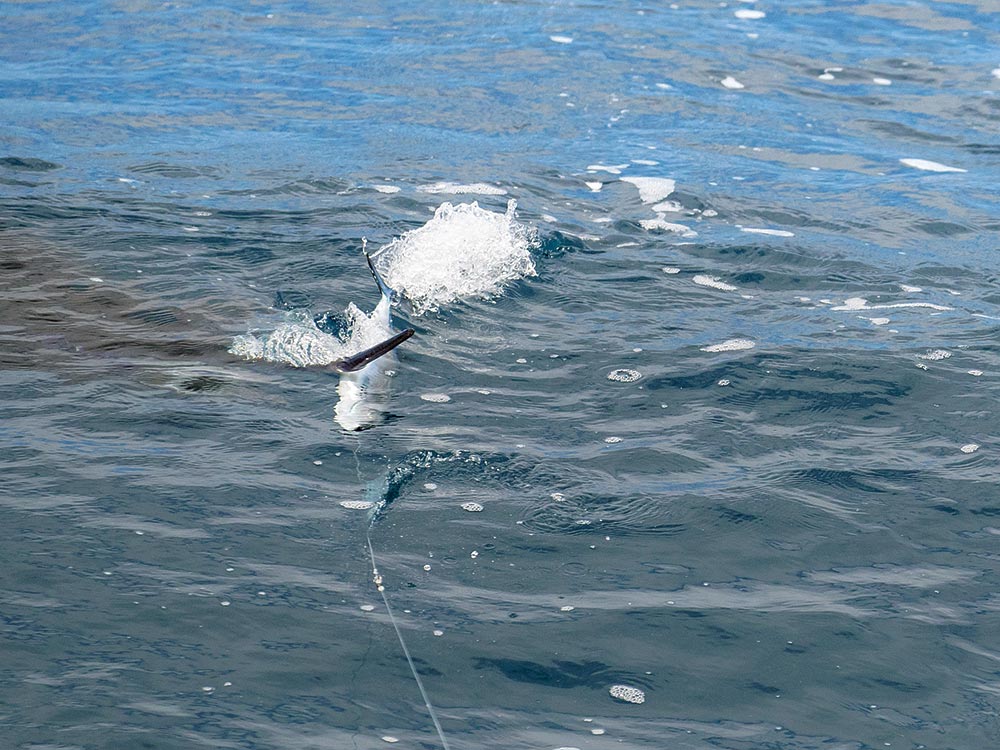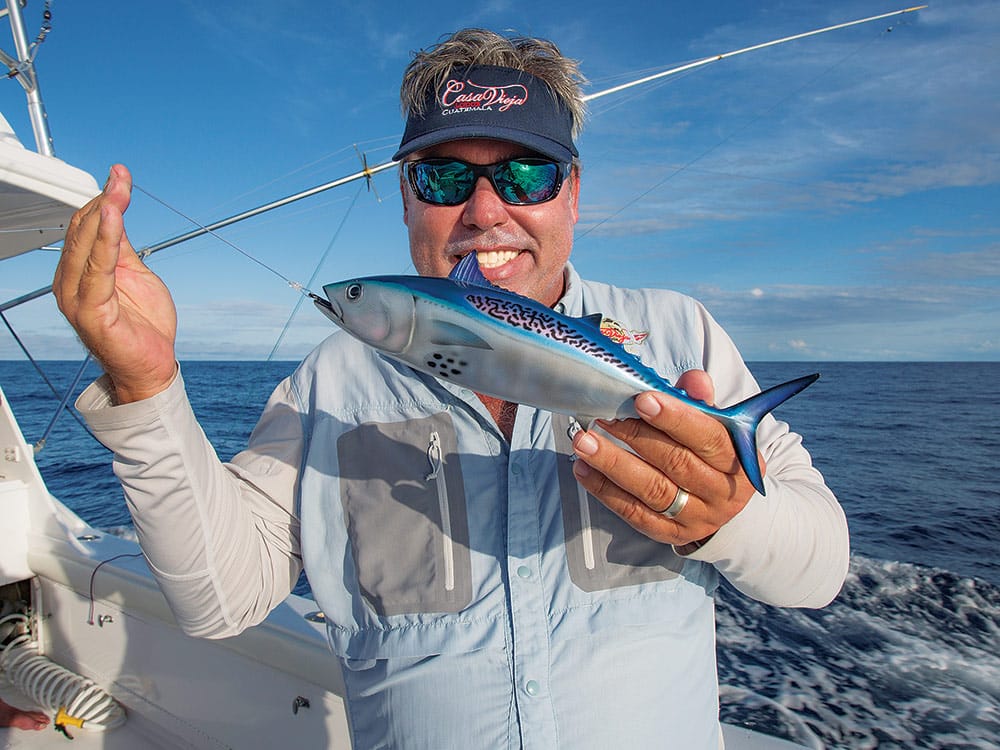I was walking around the King Kamehameha hotel in Kona, Hawaii, 25 years ago, looking at fiberglass mounts of a big marlin with some skipjack tuna on the wall and thinking how one of those skippies might make a pretty good teaser. Since then, I’ve always played with the idea, looking for the perfect application.

Ten years ago, I brought one of those small fiberglass tuna down to Guatemala and asked my crew to rig up one on a spinning rod to use as a retease for marlin. They thought I was crazy, but when a 300-pound marlin lazily teased halfway to the boat and sank out of sight, I called for the Charlie Tuna. The mate made a long cast, the fiberglass fish hit the surface, the bail flipped over, and the painted fish skipped along beautifully. That blue marlin came back with some serious ferocity and was then teased into a beautiful head-and-shoulders bite that we had never expected. From then on, the Charlie Tuna has had a spot in our arsenal.
Why It Works
The fiberglass mount might not smell like the real thing, but it makes up for it by looking exactly like a skipjack, one of a blue marlin’s favorite forage species. Another benefit: It doesn’t rip apart if you’re too slow on the retrieve and the marlin grabs it. The slick finish will pop right out of the fish’s mouth. And it can be used over and over, season after season. There are several companies that make them, including Gray’s Taxidermy and King Sailfish Mounts, which is who produced our current version. They even glassed in an eye for the leader.

Natural bait is also heavy and it sinks, making it difficult to cast and retrieve with a spinning rod. The Charlie Tuna is light and skips very well along the surface, making it perfect for a high-speed retrieve. The first time you put this in front of a marlin, be ready to reel because he will be coming after it.
We use it primarily when fly-fishing, to retease a marlin that doesn’t switch from a teaser to the fly. Once a marlin is raised on the primary teasers, we go into neutral, cast the fly and finalize the initial tease, where the fish will either bite the fly or fade away. If it swims away, we need to cast a teaser since the boat has now come to a complete stop. This is when Charlie Tuna really shines: The marlin will usually be within range of a 40- to 50-foot cast and can be brought back into range for a second, or sometimes even third or fourth shot.
How to Fish It
Since we use this for fly-fishing, keeping the teaser away from the marlin is crucial. Once it hits the water, go ahead and start winding it in as fast as you can. We have had fish nearly hit the boat chasing this thing. You can also use the Charlie Tuna in other situations where you have a lazy marlin around the boat and need to cast a teaser to get it fired up.
We fish the Charlie Tuna on a fairly heavy spinning rod with 10 pounds of drag. You can either drill a hole through the upper and lower jaws or use a glassed-in eyelet, where you can attach a 3-foot section of 130-pound-test monofilament leader, a heavy-duty ball-bearing swivel and a short section of double line using a Bimini twist.

About the Author: Capt. Chris Sheeder has released more than 25,000 billfish in his career, including more than 8,000 on fly. He captains Rum Line, a 40-foot Gamefisherman, at Guatemala’s world-renowned Casa Vieja Lodge.







